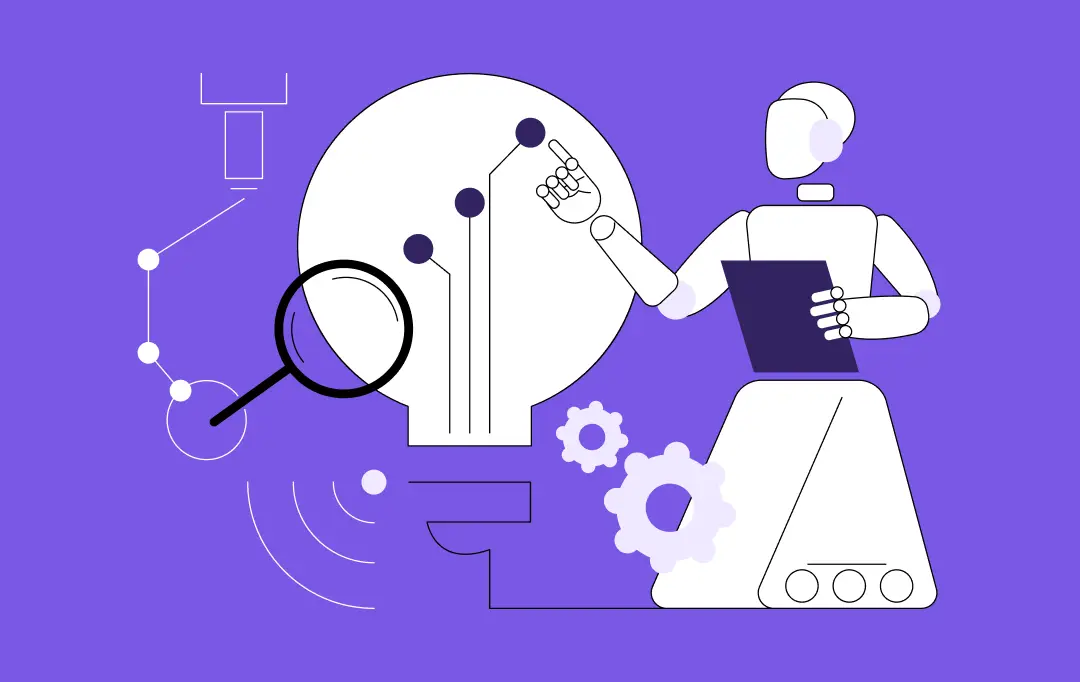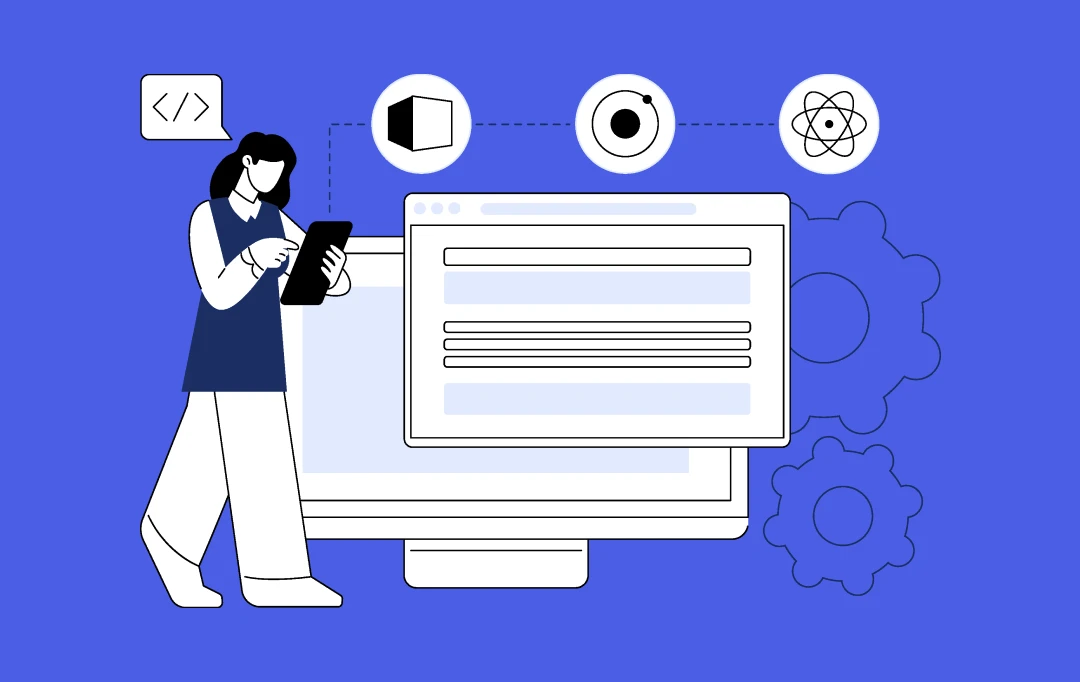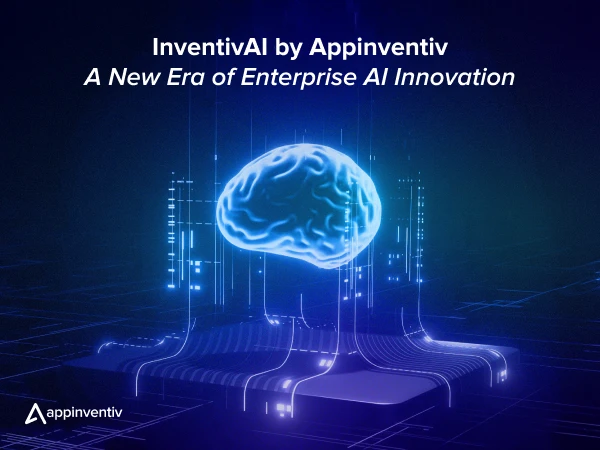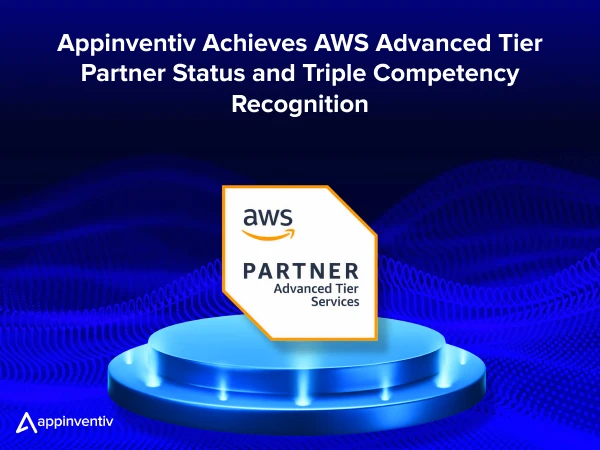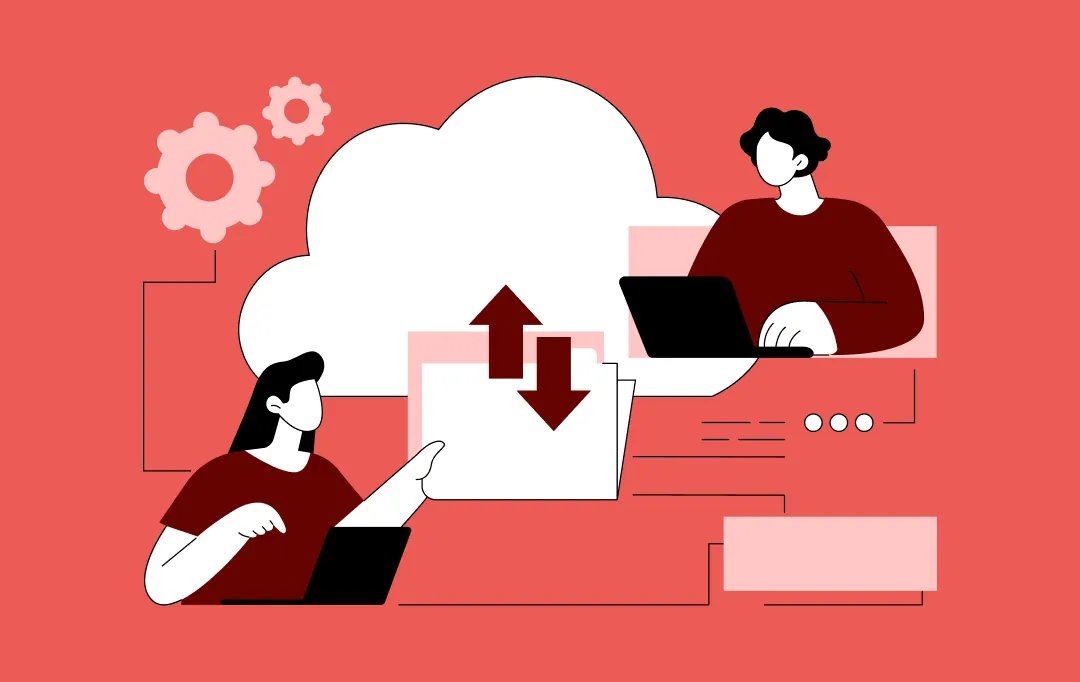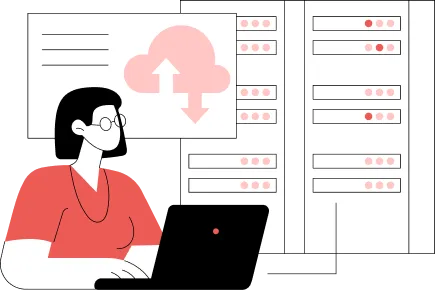- How Cloud Adoption Is Evolving in Australia
- What is driving cloud adoption across Australia
- The Role of Cloud Migration Consulting for Australian Enterprises
- What is pushing organizations toward cloud
- Key Benefits of Cloud Migration for Australian Organizations
- 1. A stronger, more reliable security foundation
- 2. Better performance for teams working across different regions
- 3. Lower operational strain and more predictable costs
- 4. The ability to scale without painful delays
- 5. A smoother path to AI, automation and advanced analytics
- 6. Better resilience and simpler disaster recovery
- 7. Less day-to-day maintenance for internal teams
- 8. A foundation that supports long-term growth
- Industry-Specific Cloud Migration Use Cases in Australia
- BFSI and Fintech
- Healthcare and Aged Care
- Mining and Resources
- Logistics and Supply Chain
- Retail and eCommerce
- Public Sector
- Step-by-Step Cloud Migration Strategies for Australian Enterprises
- 1. Cloud Readiness Assessment for Australian Enterprises
- 2. Designing the Right Cloud Model for Australia
- 3. Selecting the Right Cloud Provider in Australia
- 5. Data Migration Strategy
- 6. Application Migration and Modernization
- 7. Go-Live Execution and Cutover
- 8. Post-Migration Optimization
- Tools and Technologies Used in Cloud Migration
- Understanding What You Have: Discovery and Assessment Tools
- Building the Foundation: Landing Zone and Security Setup
- Moving the Data: Migration Engines and Pipelines
- Moving the Applications: Modernization and Migration Tools
- Keeping Everything Stable: Monitoring and Observability
- Strengthening Security and Compliance
- Managing Costs the Right Way: FinOps Tools
- Automating the Future: Orchestration and IaC Tools
- Challenges Australian Enterprises Face During Cloud Migration
- 1. Managing data residency and compliance
- 2. Dealing with legacy infrastructure
- 3. Shortage of cloud and DevOps skills in Australia
- 4. High cost of refactoring older systems
- 5. Slow internal approvals in regulated industries
- 6. Interoperability issues during migration
- 7. Rising cybersecurity threats
- Cloud Governance, FinOps and Continuous Optimization in Australia
- How Appinventiv Supports Australia-Ready Cloud Migration
- FAQs
- Cloud migration in Australia is accelerating as enterprises modernize aging systems and prepare for AI-driven workloads.
- Local cloud regions in Sydney, Melbourne and Brisbane make compliance and performance far easier for large-scale migrations.
- A strong cloud migration strategy for enterprises in Australia depends on clear assessment, the right tools and ongoing optimization.
- Industry use cases in BFSI, healthcare, mining, logistics, retail and the public sector show how cloud unlocks reliability, scale and flexibility.
- Appinventiv supports cloud migration services in Australia with end-to-end consulting, modernization and APRA-aligned cloud architecture expertise.
Many Australian organizations are starting to feel the strain of their older systems. It’s rarely one dramatic failure that triggers change. More often, it’s something small. A workflow slows down during a busy week. A security patch takes longer than it should. A new tool refuses to integrate the way it’s supposed to. These moments add up, and leaders eventually realize the foundation needs more than quick fixes.
According to an IDC whitepaper on Australia and New Zealand, commissioned by Microsoft, public cloud spending in Australia is expected to rise from A$12.2 billion in 2022 to about A$22.4 billion in 2026 — an 83 percent jump driven by enterprises shifting more workloads into the cloud and modernizing their core systems. That kind of growth says a lot about what’s happening on the ground. Companies aren’t moving to the cloud because it’s trendy; they’re doing it because the old way of running infrastructure is becoming too rigid, too expensive, and too risky to maintain.
This guide breaks down what a cloud migration strategy for enterprises in Australia looks like today. Beyond the jargon, it explains the steps, tools and decisions teams across Sydney, Melbourne, Brisbane and regional areas are working through right now. If your organization is trying to understand how cloud migration in Australia fits into your next stage of growth, this overview will help you move forward with more clarity and fewer surprises.
61% of mid-to-large Australian enterprises have already begun multi-phase cloud migration programs. Learn how you can join them
How Cloud Adoption Is Evolving in Australia
Australian businesses have been moving to the cloud for a while, but the shift feels different now. It is less about chasing trends and more about trying to keep daily operations running smoothly. Teams want systems that do not slow them down. Leaders want fewer surprises during busy weeks. And with stronger security expectations in the country, older setups are starting to feel more like a responsibility than an asset.
What is driving cloud adoption across Australia
- More organizations are moving steady portions of their workloads to the cloud as part of broader cloud migration in Australia.
- Local cloud regions in Sydney and Melbourne make it easier to meet data residency rules and support customers with better speed.
- Mining, logistics and other industries with large distances to cover depend on cloud platforms to stay reliable and connected.
- Banks and financial institutions are increasing adoption to meet new compliance and security expectations.
- Healthcare providers and government departments are choosing cloud to handle sensitive data more safely and deliver better online services.
- Companies investing in AI projects are realizing they need cloud-ready data platforms to support the extra load.
- Managed service providers in Australia are helping teams move gradually, especially where internal skills are tight.
Looking ahead, cloud migration in Australia will keep growing as more enterprises phase out legacy systems and build technology around a modern, flexible setup. Better local data centers, stronger regional networks and the need for AI capable infrastructure will shape how organizations plan their cloud migration strategy in Australia in the coming years. For many teams, the cloud is becoming the natural place to run core systems, not an optional upgrade.
The Role of Cloud Migration Consulting for Australian Enterprises
A lot of Australian companies reach a point where their older systems start getting in the way. It usually shows up in small, annoying moments. A dashboard freezes when the team needs it most. A routine update takes the whole afternoon. A customer-facing feature slows down right when traffic picks up. After a while, leaders begin to see the pattern.
The technology that once worked fine cannot support how the business operates today. A well-planned cloud migration strategy in Australia gives organizations a clearer way to scale while staying compliant with local rules.
What is pushing organizations toward cloud
- Many teams want a stronger security baseline that aligns with the Privacy Act and APRA expectations.
- Businesses spread across Sydney, Melbourne, Brisbane and regional areas often need more consistent performance than legacy setups can provide.
- The cost of maintaining older hardware keeps rising, making a clear cloud migration strategy in Australia feel more practical than patching systems year after year.
- Customers expect faster digital experiences, especially in banking, healthcare and logistics, and the pressure is hard to ignore.
- New projects in automation and AI require modern data platforms, and that isn’t easy to build without cloud support.
- Cloud environments reduce the day-to-day strain on internal teams who are already juggling upgrades, monitoring and constant fixes.
In the end, a cloud migration strategy for enterprises in Australia is not just a technical shift. It is a way for organizations to move toward a setup that feels stable, easier to grow with and less exhausting to maintain. Companies are realizing that cloud migration in Australia is becoming the safer, smoother path forward rather than a risky leap.
Key Benefits of Cloud Migration for Australian Organizations
When Australian companies talk about cloud migration, it usually starts with a simple question. “What will actually improve if we move?” The answer is rarely one thing. Most teams discover that once they begin shifting their systems, several parts of the business start breathing a little easier. Some changes show up slowly, almost in the background. Others make a difference right away.
Here are the benefits that matter most to enterprises in Australia right now, especially as they plan long-term modernization. These cloud migration benefits become clearer once teams see how many issues disappear after moving away from legacy systems.
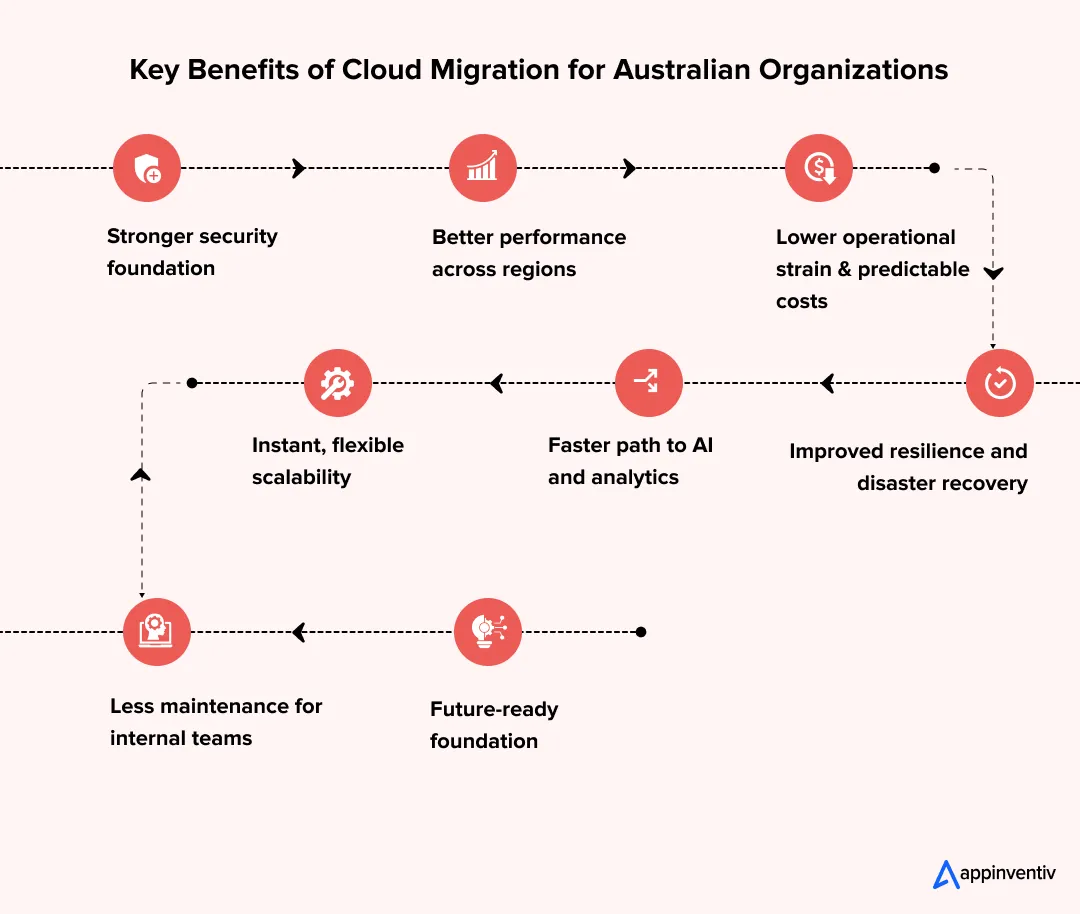
1. A stronger, more reliable security foundation
Security is usually the first topic in any conversation about cloud migration in Australia. Older systems need constant attention. Someone is always patching something, checking logs, or trying to make tools talk to each other. Modern cloud environments offer stronger, built-in security controls that align naturally with Australian regulations, including the Privacy Act and APRA standards.
Cloud providers offer features like identity management, encrypted storage, security monitoring, and automated threat protection. Combined with services like cloud security consulting or DevSecOps development, organizations gain a security posture that would be much harder to maintain on their own.
2. Better performance for teams working across different regions
Australia’s geography creates unique challenges. A company with teams in Sydney, Melbourne, Brisbane, Perth, or regional locations knows how unpredictable performance can be on older setups. Cloud platforms reduce that friction by offering local zones and distributed workloads.
That means fewer delays, smoother applications, and systems that stay dependable even when demand spikes. With the right cloud architecture design, teams in different states get the same consistent experience.
3. Lower operational strain and more predictable costs
Maintaining on-prem infrastructure slowly becomes a patchwork job. One server reaches the end of its life. Another needs a firmware update. A database outgrows its storage. Cloud migration shifts this burden away from internal teams and into a model that is easier to plan and budget for.
Costs become more predictable because cloud environments scale as needed. When paired with cloud cost optimization or FinOps strategy, organizations can reduce waste, right-size workloads, and run leaner without compromising performance.
4. The ability to scale without painful delays
Organizations grow in unexpected ways. Maybe a new digital service gets more traffic than expected. Maybe a business line needs fresh analytics capabilities. On legacy systems, scaling is complicated and slow. You wait for hardware, approvals, installation, configuration. With cloud, scaling often takes seconds.
Modern architectures built through microservices architecture, Kubernetes deployment, or application modernization allow companies to expand their capacity whenever needed without bringing the entire system to a halt.
5. A smoother path to AI, automation and advanced analytics
A lot of Australian enterprises want to adopt AI tools, predictive analytics, or automated workflows, but older infrastructure makes this difficult. Cloud environments offer native access to AI engines, machine learning platforms, serverless tools, and advanced analytics systems.
With support from AI development, data engineering services, or data platform modernization, teams can finally build the solutions they kept delaying because they could not run them on outdated systems. It becomes easier to experiment, test ideas, and launch features without waiting for massive upgrades.
6. Better resilience and simpler disaster recovery
Many Australian organizations rely on uptime. Banks, hospitals, logistics networks, government agencies, and online retailers cannot afford long outages. Cloud migration gives them a built-in safety net by providing distributed backups, multi-zone replication, and faster recovery options.
Instead of managing complicated manual backup routines, companies can rely on automated processes designed into the cloud. With cloud disaster recovery planning, recovery time drops dramatically and critical services come back online faster after disruptions. For many teams working across different states, cloud migration Australia helps remove limitations of aging data centers.
7. Less day-to-day maintenance for internal teams
One of the unexpected benefits of cloud migration in Australia is the emotional relief it brings to IT teams. When infrastructure no longer demands constant attention, teams can finally focus on projects that move the business forward instead of repeating the same maintenance cycles.
With support from managed cloud services, internal teams shift from firefighting to building. They gain back hours each week and can finally work on higher-value initiatives.
8. A foundation that supports long-term growth
Cloud migration is not only about solving today’s issues. It creates a foundation that lets organizations adapt to whatever comes next. Market conditions shift. Customer expectations rise. New technologies appear. The cloud gives companies the flexibility to respond without starting from zero every time.
By pairing cloud migration with enterprise digital transformation, organizations future-proof their operations in a way that on-prem systems simply cannot support anymore.
Industry-Specific Cloud Migration Use Cases in Australia
Different industries in Australia face very different pressures, so the way they approach cloud migration varies a lot too. Some do it to solve performance issues. Some do it to modernize old systems. Others are trying to support teams spread across large regions. Here are real situations where cloud migration has already made an impact.
BFSI and Fintech
Banks and fintech companies in Australia usually move to the cloud for one main reason — they need speed and trust at the same time.
- Commonwealth Bank of Australia (CBA) migrated more than ten petabytes of data and over 61,000+ jobs to a major cloud platform, improving analytics performance and operational flexibility.
- Cloud makes real-time fraud monitoring possible by pairing modern cloud stacks with advanced analytics and AI development capabilities.
- Local cloud regions help banks meet APRA and data-sovereignty expectations while building digital banking stacks supported by cloud consulting and core banking modernization.
Healthcare and Aged Care
Healthcare systems in Australia generate more data every day, and cloud migration helps make that data easier to access, share, and protect.
- eHealth NSW migrated their most critical clinical applications to AWS, showing that large-scale transitions can be done safely for highly sensitive workloads.
- Cloud migration makes it easier to build patient-data interoperability frameworks with healthcare data engineering and support nationwide access to My Health Record.
- Telehealth platforms, especially in remote regions, work more consistently when supported by stable cloud infrastructure and services like cloud architecture design.
Mining and Resources
Mining companies in Australia depend on systems that can handle distance, dust, remote sites, and huge amounts of data.
- Miners use cloud-enabled IoT and edge setups to collect and process sensor data from remote sites in real time.
- Autonomous operations and predictive maintenance become easier when workloads are moved into flexible, scalable environments using data engineering and application modernization.
- High-volume analytics workloads run more reliably on cloud than on older local servers typically found at remote mines.
Logistics and Supply Chain
Logistics companies in Australia deal with long distances, high fuel costs, and a constant need for real-time visibility. Cloud migration helps them handle all three.
- Cloud migration removes bottlenecks by replacing rigid databases with flexible, scalable systems designed for burst demand.
- Kings Transport (Australia) modernized its transport-management system on Google Cloud, reducing administrative work and improving performance.
- Cloud-based fleet analytics, route optimization solutions, and real-time tracking infrastructure run far better on scalable cloud environments than on legacy setups.
Retail and eCommerce
Retailers in Australia feel the impact of cloud migration faster than most because customer behavior changes quickly.
- Migrating to the cloud gives them elasticity when demand spikes, for example during major sales or holidays.
- Kmart Australia migrated several business applications from on-prem systems to AWS to gain better agility, stability, and cost control.
- Cloud supports seasonal elasticity for eCommerce, along with personalization engines, unified POS systems, and retail cloud modernization.
Public Sector
Government services need systems that stay stable, secure, and available even during emergencies.
- Australian public sector agencies use AWS Managed Services to optimize cloud operations after migration, improve uptime, and support digital public services.
- Cloud migration helps agencies handle citizen data under strict rules and build more modern platforms with public sector cloud modernization.
- The shift to cloud also makes digital service delivery faster for people in regional and urban areas alike.
Step-by-Step Cloud Migration Strategies for Australian Enterprises
A cloud migration strategy in Australia works best when it moves slowly at the start and gains speed once the foundation is clear. Australian organizations face their own mix of challenges — legacy systems, long regional distances, strict compliance and limits in local tech talent. Because of this, a rigid one-size plan rarely works. A migration roadmap needs space for discovery, fixes, and adjustments.
Almost every cloud migration strategy in Australia starts with mapping what already exists, simply because older systems often hide dependencies. Below is a practical framework that matches how Australian enterprises approach cloud migration in real projects today.
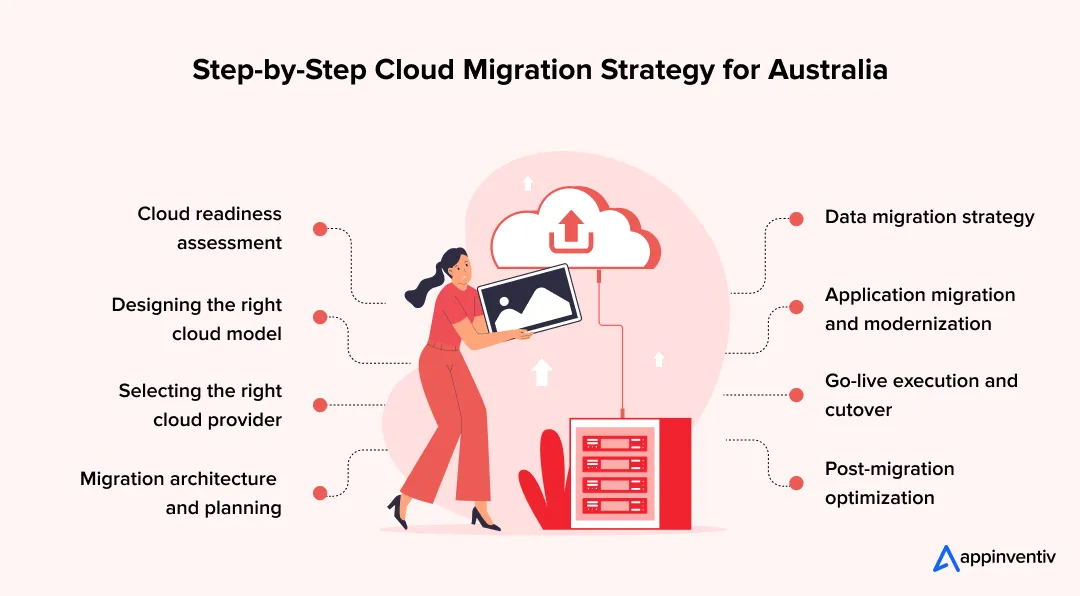
1. Cloud Readiness Assessment for Australian Enterprises
This is where companies figure out what they actually have, what is slowing them down, and what needs to move first.
A strong assessment includes:
- Mapping all applications, databases and integrations.
- Identifying what can migrate and what needs application modernization.
- Reviewing data classifications under the Australian Privacy Principles (APPs).
- Understanding how the system behaves across regions like Sydney, Melbourne and Brisbane.
- Evaluating security risks aligned with APRA CPS 234.
- Reviewing operational limits in current infrastructure.
This stage sets the tone for the entire cloud migration process and ensures organizations do not run into surprises halfway through.
Recommended tools: AWS Migration Evaluator, Azure Migrate Discovery, Google Stratozone, and cloud consulting frameworks.
2. Designing the Right Cloud Model for Australia
Australian companies use a mix of public, private, hybrid and multi cloud setups. The right choice depends on where the workloads live and how sensitive they are.
Key decisions include:
- Public cloud for scalable or customer-facing systems.
- Private cloud for sensitive workloads in healthcare or government.
- Hybrid cloud for organizations transitioning gradually.
- Multi cloud to reduce vendor lock-in and meet compliance.
A mining company may pick hybrid cloud to support remote operations, while a fintech platform may choose public cloud for elasticity. These cloud migration strategies help organizations move gradually while keeping critical workloads stable.
3. Selecting the Right Cloud Provider in Australia
Choosing the right cloud platform is not only about cost. Australian data residency, support availability, regional zones and compliance all matter. For workloads that demand low latency, cloud migration Melbourne remains a common choice thanks to strong regional infrastructure.
Common options:
- AWS Australia: Sydney and Melbourne regions.
- Microsoft Azure: Australia East, Australia Southeast, Australia Central for protected workloads.
- Google Cloud Platform: Sydney and Melbourne regions with expanding services.
What enterprises check:
- Local compliance strength.
- Network performance across states.
- SLA clarity and uptime history.
- Cost patterns specific to Australian regions.
Teams often bring in cloud consulting specialists to evaluate vendor lock-in and performance expectations.
4. Migration Architecture and Planning
This stage decides how the migration will actually work. It is usually the slowest and most detailed part. Many teams now use a secure cloud migration strategies checklist to verify identity, access, encryption and network controls before moving workloads.
Key tasks:
- Designing a secure cloud landing zone.
- Setting identity and access policies.
- Creating network maps across availability zones.
- Preparing storage, backups and monitoring layers.
- Planning workload grouping for smooth movement.
- Designing multi-region resilience for big workloads.
Modernizing applications with microservices development, Kubernetes deployment, or API modernization gives teams more freedom during migration.
5. Data Migration Strategy
Data migration is almost always the trickiest part because older systems rarely store information cleanly. However, once the data is stable, application migration to the cloud becomes far easier and less risky.
What this phase involves:
- Moving structured and unstructured data with zero-loss rules.
- Using encryption at rest and in transit.
- Masking or anonymizing fields that fall under the APPs.
- Using automated pipelines built by data engineering teams.
- Validating data quality before cutting over.
- Building rollback safety in case something breaks unexpectedly.
Most organizations use a combination of AWS DMS, Azure Database Migration Service, and Google Cloud Dataflow.
6. Application Migration and Modernization
Choosing between refactor, rehost, replatform or retire remains one of the most important cloud migration strategies during execution. This is where systems finally start moving.
The types of cloud migration strategies in Australia usually depend on how fast organizations need to modernize and how complex their legacy assets are.
There are several approaches:
- Rehost (lift-and-shift for simpler systems).
- Replatform (small improvements before moving).
- Refactor (rebuild or restructure parts for long-term scalability).
- Retire (remove systems no longer needed).
Australian enterprises often refactor customer-facing platforms to support new features built with AI development, analytics modernization, and serverless engineering.
7. Go-Live Execution and Cutover
This is the point where systems actually switch over. Teams move slowly here to avoid disruption.
A controlled go-live includes:
- Running both old and new systems in parallel for a short time.
- Monitoring latency, performance and user activity.
- Checking compliance logs for anomalies.
- Adjusting load balancers to route real traffic to cloud.
- Having a rollback plan ready in case anything feels off.
Logging and monitoring tools like CloudWatch, Azure Monitor, and Google Cloud Operations Suite help catch issues early.
8. Post-Migration Optimization
Once everything is running, organizations begin tuning.
Tasks include:
- Right-sizing compute and storage to reduce cost.
- Auditing configuration for security leaks.
- Using FinOps services to control ongoing spend.
- Improving CI/CD pipelines with DevOps consulting.
- Optimizing resource usage for AI, analytics and automation workloads.
A good optimization cycle makes the cost of cloud predictable and keeps the environment healthy.
Tools and Technologies Used in Cloud Migration
Most Australian enterprises discover quickly that cloud migration is not a single-tool exercise. Because of the diversity of legacy systems across industries, cloud migration tools must support everything from basic lift-and-shift to deep modernization.
It unfolds in stages, and each stage needs its own set of technologies to keep things predictable, secure and aligned with the realities of Australia’s compliance landscape. Below is a more intuitive, story-driven look at the tools that show up across real cloud migration projects in the country.
Understanding What You Have: Discovery and Assessment Tools
Cloud migration usually starts with a simple truth: most organizations do not have complete visibility into their own systems. Years of patches and workarounds leave a trail that tools must uncover before anything moves.
This is where platforms like AWS Migration Evaluator, Azure Migrate Discovery, and Google StratoZone help. They scan environments, expose dependencies and reveal the performance patterns teams never had time to analyze. For organizations where compliance matters, assessments are often paired with cloud consulting frameworks to check alignment with the Australian Privacy Principles and APRA rules.
These tools help avoid surprises later, especially across multi-region operations in Sydney, Melbourne and Brisbane.
Building the Foundation: Landing Zone and Security Setup
A secure landing zone is one of the most overlooked parts of cloud computing migration, especially in APRA-regulated sectors. Once the map is clear, teams need a place in the cloud that is secure, organized and built to Australian standards. This is often called the landing zone.
Teams use AWS Control Tower, Azure Landing Zones, or Google Cloud’s Landing Zone Accelerator to set up identity rules, networks, encryption, logging and guardrails. This step alone prevents many downstream issues. And when organizations want strong governance from day one, they bring in cloud architecture design and DevSecOps consulting to tailor the setup for local compliance, especially in APRA-regulated sectors.
The landing zone is the part nobody sees, but everything depends on it.
Moving the Data: Migration Engines and Pipelines
Data is usually the hardest part of cloud migration in Australia. Older systems hold records in formats that do not match, or store sensitive fields that must be masked before moving.
This is where tools like AWS Database Migration Service (DMS), Azure Database Migration Service, and Google Cloud Dataflow come in. They support structured, unstructured, and streaming data migrations while keeping downtime low. Nearly every migration also needs data engineering support to cleanse, validate and secure data according to Australian privacy laws.
Without this stage, nothing else moves safely.
Moving the Applications: Modernization and Migration Tools
Once the data is stable, applications follow. Some lift-and-shift easily. Others resist change because they were built for a world that no longer exists.
Teams rely on AWS Server Migration Service, Azure App Service Migration Assistant, Google Migrate for Compute, and custom modernization with microservices development, Kubernetes deployment, or API modernization. This is where Australian sectors like healthcare, logistics and retail often see the most improvement, because their legacy systems have long caused delays.
Choosing the right approach (rehost, replatform, refactor) determines cost, speed and long-term flexibility.
Keeping Everything Stable: Monitoring and Observability
After workloads land, stability becomes the priority. Cloud environments feel different because they do not behave like single on-prem servers.
Tools such as AWS CloudWatch, Azure Monitor, and Google Cloud Operations Suite give teams visibility into logs, latency, performance and incoming issues. For organizations with limited internal talent, DevOps consulting helps automate alerts, optimize CI/CD pipelines and reduce noise.
These cloud migration tools also help teams track patterns that older systems could never surface. In Australian enterprises where teams operate across states, visibility is often the difference between smooth operations and unexpected outages.
Strengthening Security and Compliance
With rising cyber incidents across Australia, security cannot be an afterthought. Cloud platforms offer stronger protections, but they still need configuration.
Teams use AWS Security Hub, Azure Security Center, Google Security Command Center, HashiCorp Vault, and solutions like CrowdStrike or Trend Micro Cloud One. Paired with cloud security consulting, these tools ensure alignment with APPs, APRA CPS 234 and other local compliance needs.
This layer protects the business from the incidents that have become too common across Australian industries.
Managing Costs the Right Way: FinOps Tools
Cloud spending can grow quickly without guardrails. In Australia, where budgets are closely monitored, cost governance becomes essential.
Tools like AWS Cost Explorer, Azure Cost Management, GCP Billing, CloudHealth, and CloudCheckr help teams create predictable financial models. Combined with FinOps cloud cost optimization strategies, organizations get proactive monitoring and rightsizing recommendations that prevent runaway costs.
Good cost management is one of the most underrated benefits of cloud migration.
Automating the Future: Orchestration and IaC Tools
Finally comes automation, this is the stage that makes cloud sustainable. Australian companies often reach this phase once they stop fighting fires and start thinking long term.
They use Terraform for infrastructure provisioning, Ansible for configuration, and Kubernetes for container orchestration. Teams with limited internal engineering talent rely on intelligent infrastructure automation services to make sure automation becomes a strength instead of technical debt.
In a market where cloud talent is scarce, automation is a lifesaver.
With AI adoption rising across the region, the future of cloud migration in Australia will depend heavily on automation, modernization and data platform readiness.
Challenges Australian Enterprises Face During Cloud Migration
Cloud migration in Australia comes with its own set of roadblocks. Most teams face similar issues, especially when older systems and strict regulations are involved. Many organizations bring in cloud migration consulting support to avoid delays caused by internal approval cycles. Here are the cloud migration challenges that appear most often, along with simple ways organizations work through them.
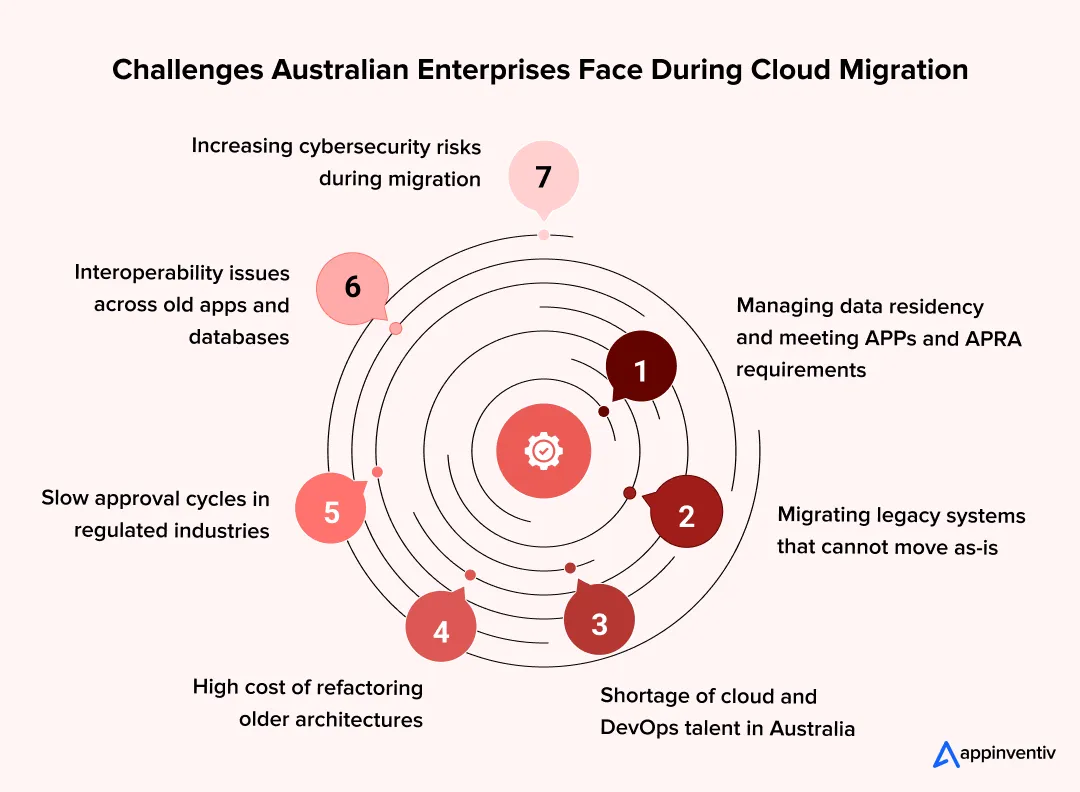
1. Managing data residency and compliance
Australian organizations must meet the Privacy Act, APPs and, for BFSI, APRA CPS 234. Moving sensitive workloads without breaking rules can feel overwhelming.
How teams solve it: Using local cloud regions in Sydney and Melbourne, along with strong governance from cloud consulting experts, gives companies a safe, compliant path forward.
2. Dealing with legacy infrastructure
Banks, public-sector agencies and healthcare providers often run systems built years ago. Some cannot move as-is.
Solution: A mix of phased migration and application modernization helps teams gradually update what they have without shutting down daily operations.
3. Shortage of cloud and DevOps skills in Australia
Australia continues to face a shortage of experienced cloud architects and DevOps engineers, which slows down migration projects.
Solution: Most enterprises bring in outside support through managed cloud services or DevOps consulting, easing pressure on internal teams.
4. High cost of refactoring older systems
Rebuilding legacy applications can get expensive. A cloud migration consultant often steps in when teams need help rebuilding old architectures without causing downtime.
Solution: Teams often start with rehosting or replatforming and reserve refactoring for the few systems that truly need it, supported by cloud migration consulting.
5. Slow internal approvals in regulated industries
Heavily regulated sectors have long review cycles, which can delay cloud migration in Australia.
Solution: Clear documentation, early compliance reviews and pre-approved landing zones streamline approvals.
6. Interoperability issues during migration
Old apps, databases and integrations do not always work smoothly in cloud environments.
Solution: Discovery tools, dependency mapping and API modernization help avoid outages and integration failures.
7. Rising cybersecurity threats
Australian companies are dealing with more frequent and more complex cyber incidents.
Solution: Modern cloud environments, combined with cloud security consulting, offer stronger baseline protection than most on-prem setups.
Cloud Governance, FinOps and Continuous Optimization in Australia
Cloud migration is only the first step. Once systems are running in the cloud, Australian enterprises need strong governance, clear financial control and ongoing optimization to keep everything secure, compliant and cost-efficient. This is where long-term value is created.
- Ongoing cost governance for AU enterprises: Australian organizations use FinOps practices to track usage, forecast spend and prevent cost overruns. Tools like AWS Cost Explorer, Azure Cost Management and GCP Billing Reports give teams clear visibility, while FinOps services help set cost guardrails that match business goals.
- Security posture management aligned with AU frameworks: Enterprises continually monitor security controls to stay aligned with the Australian Privacy Act, APPs and sector-specific expectations such as APRA CPS 234. Cloud-native tools, combined with cloud security consulting, help detect misconfigurations early.
- Continuous compliance with APPs and APRA: Compliance in Australia is not a one-time task. Automated policy checks, audit logs and regular reviews ensure that data access, encryption and identity rules remain intact throughout the year.
- Monitoring, logging and policy enforcement: Teams rely on CloudWatch, Azure Monitor or Google Cloud Operations to track performance, spot unusual activity and enforce governance policies across distributed workloads. DevOps consulting helps automate these workflows.
- Continuous performance optimization across regions: Australia’s geography makes regional performance tuning important. Organizations adjust workloads across Sydney, Melbourne and Brisbane zones to improve speed and reduce latency. For example, teams running east-coast workloads often prioritize cloud migration Brisbane to reduce latency for local operations.
- Right-sizing and cost visibility: Right-sizing compute, storage and database tiers helps keep cloud bills predictable. FinOps dashboards and managed cloud services ensure resources match real demand instead of staying oversized.
How Appinventiv Supports Australia-Ready Cloud Migration
Most Australian organizations want to migrate to the cloud without losing momentum or overwhelming their internal teams. Appinventiv helps them do exactly that. With more than 10 years of experience delivering projects across the APAC region, and having digitally transformed 35+ industries, the team brings the kind of depth that makes migrations smoother, safer and easier to scale. The company is also recognized among APAC’s High-Growth Companies by Statista and the Financial Times for two consecutive years, which reflects its consistency in delivering large-scale digital programs.
Appinventiv supports every stage of a cloud migration strategy for enterprises in Australia, from the early discovery phase to modernization, testing and ongoing optimization. Teams rely on Appinventiv when they need help with complex workload assessments, building compliant cloud landing zones, or modernizing legacy applications so they fit into a more flexible cloud architecture. With strong capabilities in cloud consulting, application modernization, data engineering, and DevOps transformation, the company helps Australian enterprises move faster without cutting corners on governance or security.
For organizations searching for cloud migration services in Australia, Appinventiv offers a combination of technical depth and regional understanding. Whether the work involves navigating APRA-aligned controls, supporting workloads across Sydney, Melbourne and Brisbane, or planning long-term cloud cost management, the team brings tailored guidance that fits the realities of the Australian market.
If your goal is to work with a partner who understands both technology and the region, Appinventiv Australia gives your migration program a reliable foundation to build on.
FAQs
Q. What is cloud migration?
A. Cloud migration is the process of moving applications, databases and workloads from on-premise systems into a cloud environment. It helps organizations improve performance, security and scalability while reducing the effort spent on maintaining physical infrastructure.
Q. What is a cloud migration strategy?
A. A cloud migration strategy is the plan that outlines how an organization will move its systems into the cloud. It covers decisions like what to migrate, how to modernize older apps and which cloud platform is the best fit. A strong strategy makes the cloud migration process smoother and reduces the risk of downtime or unexpected issues.
Q. How to plan migration to the cloud?
A. Planning a migration begins with understanding your current systems, identifying dependencies, reviewing compliance requirements and building a step-by-step roadmap. Most organizations work with a cloud migration consultant to handle assessments, architecture design and the technical pieces that come later. The plan also includes testing, cutover and post-migration optimization.
Q. What are the cloud migration types?
A. The main types of cloud migration include rehosting, replatforming, refactoring, repurchasing and retiring. Some teams lift and shift applications as they are, while others modernize apps to run on microservices or serverless architectures. Choosing the right type depends on long-term goals and the condition of existing systems.
Q. Why Do Cloud Migration Strategies Matter in Australia?
A. Cloud migration strategies are important in Australia because businesses often deal with legacy systems, strict data residency rules and teams spread across states. A well-built cloud migration strategy for enterprises in Australia helps meet compliance requirements, supports AI initiatives and improves performance for users in Sydney, Melbourne, Brisbane and regional areas.
Q. How does cloud migration work?
A. Cloud migration works in phases. First, organizations assess their existing systems. Then they design a landing zone, migrate data, move applications and run tests. Once workloads are live, teams monitor performance and optimize cost. Many companies in Australia follow this approach when planning large migrations, including those focused on cloud migration sydney where local zones support low-latency access.


- In just 2 mins you will get a response
- Your idea is 100% protected by our Non Disclosure Agreement.

How Cloud Services Accelerate Product Development for Businesses
Key takeaways: Cloud product development changes the speed, cost, and risk profile of modern software delivery. The cost of cloud product development ranges between $40,000 and $400,000 or more. Cloud platforms give you instant access to AI/ML, edge computing, and advanced analytics without dropping tons of money upfront. Appinventiv supports enterprise cloud product development through…
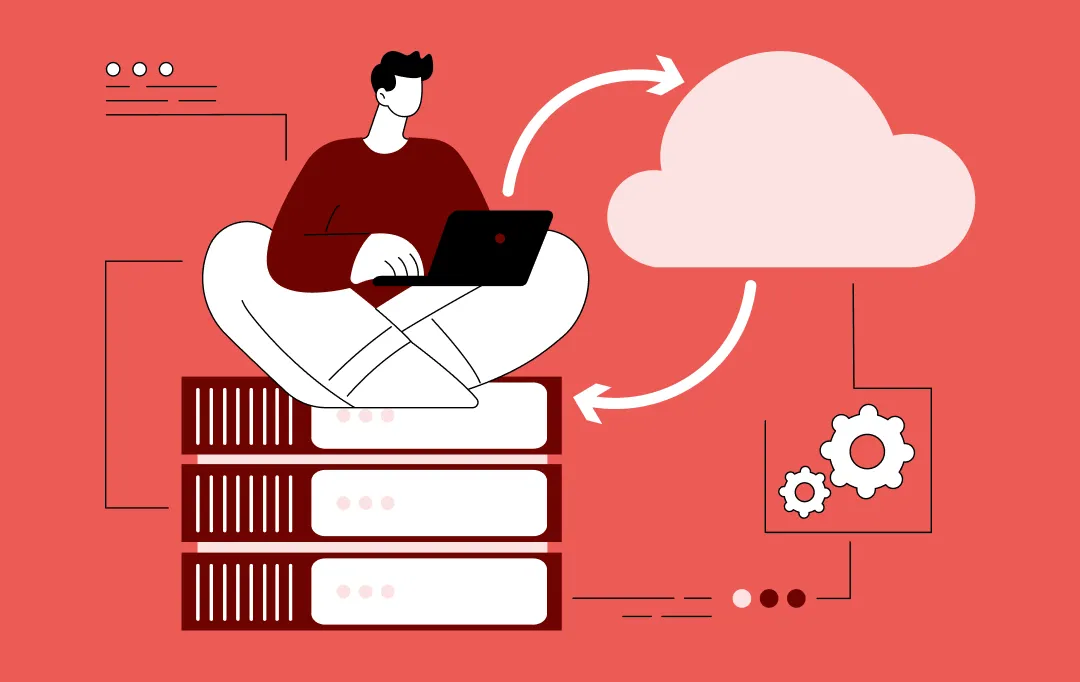
Green Cloud - How Cloud Adoption Helps Improve Sustainability/ESG Goals of Enterprises
Key takeaways: Adopting green cloud solutions lowers energy consumption, cuts emissions, and reduces operational costs. Companies like UEM Edgenta and Bharti Airtel have seen measurable improvements in sustainability and efficiency. AI Enhances Green Cloud Efficiency. AI optimizes energy use, predicts demand, and minimizes waste in cloud infrastructure. Your Green Cloud Roadmap. Start with an infrastructure…
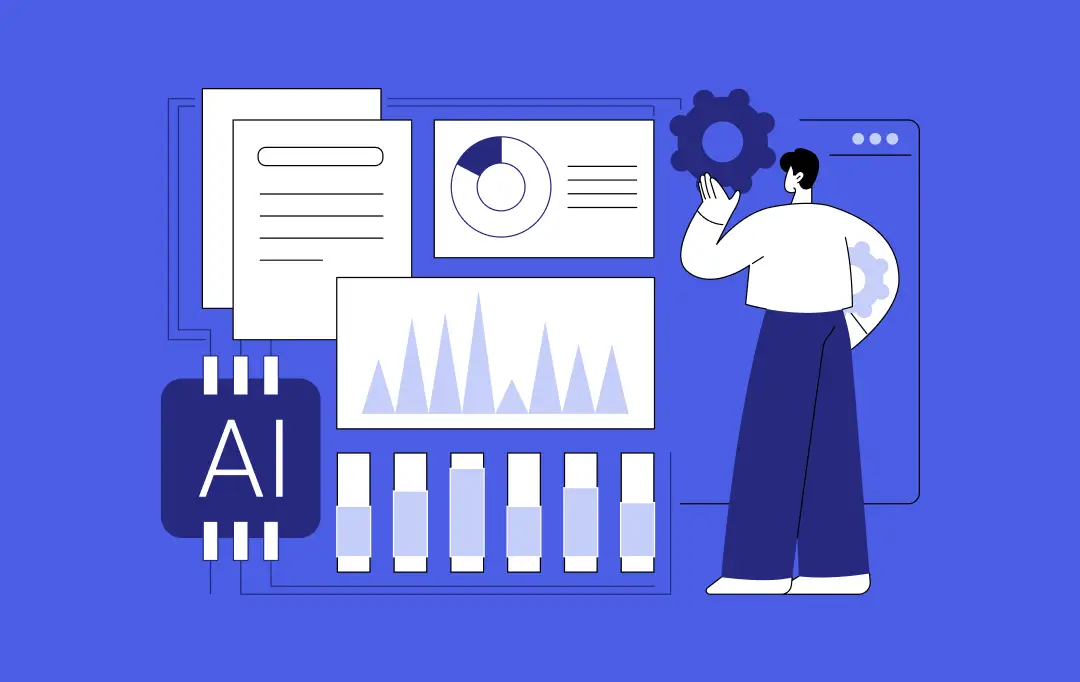
How to Ensure Data Integrity and Security During Cloud Migration?
Key takeaways: Learn how to assess risks during migration, ensuring data integrity and compliance with global standards like GDPR and HIPAA. Secure your cloud transition by implementing encryption, checksum verification, and real-time validation to maintain data accuracy. Address issues like legacy data models, schema mismatches, downtime, and third-party toolchain risks that could threaten data integrity.…

